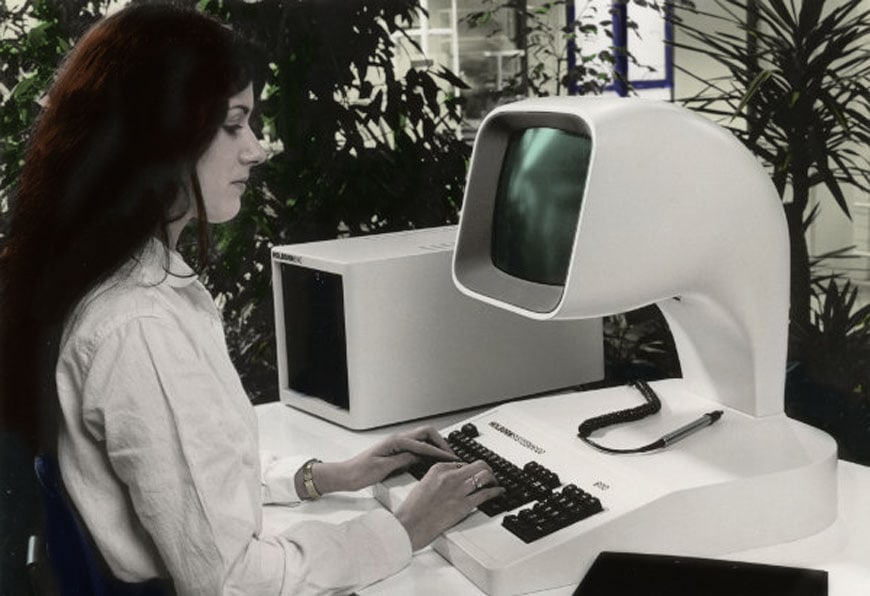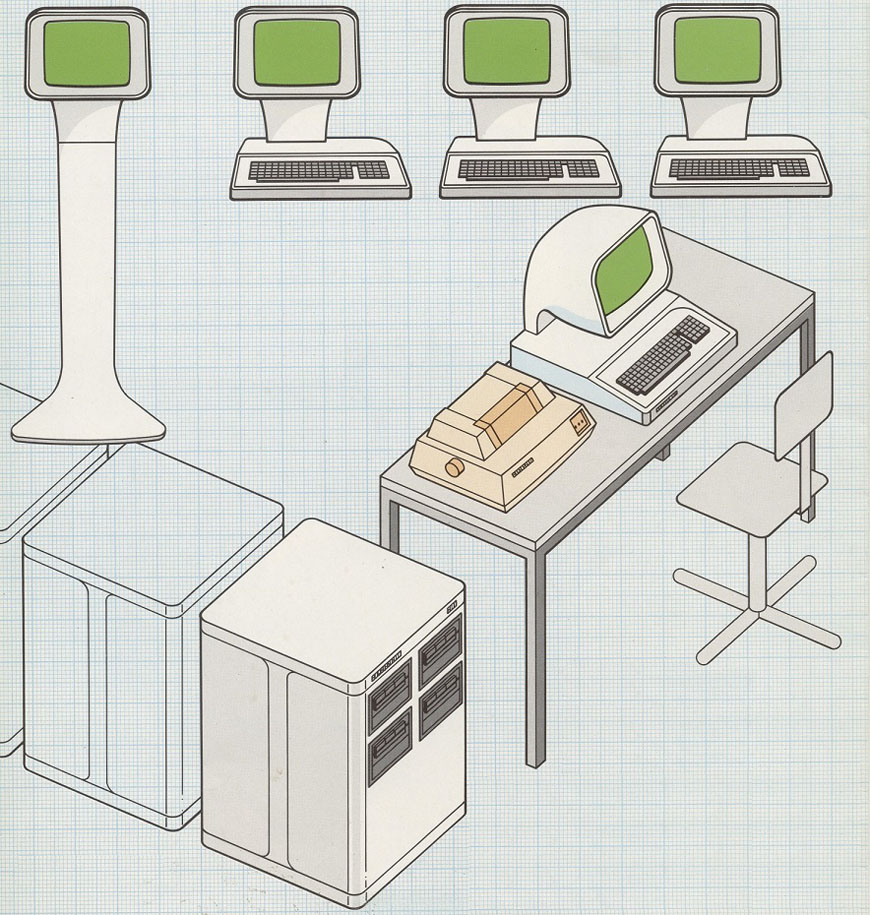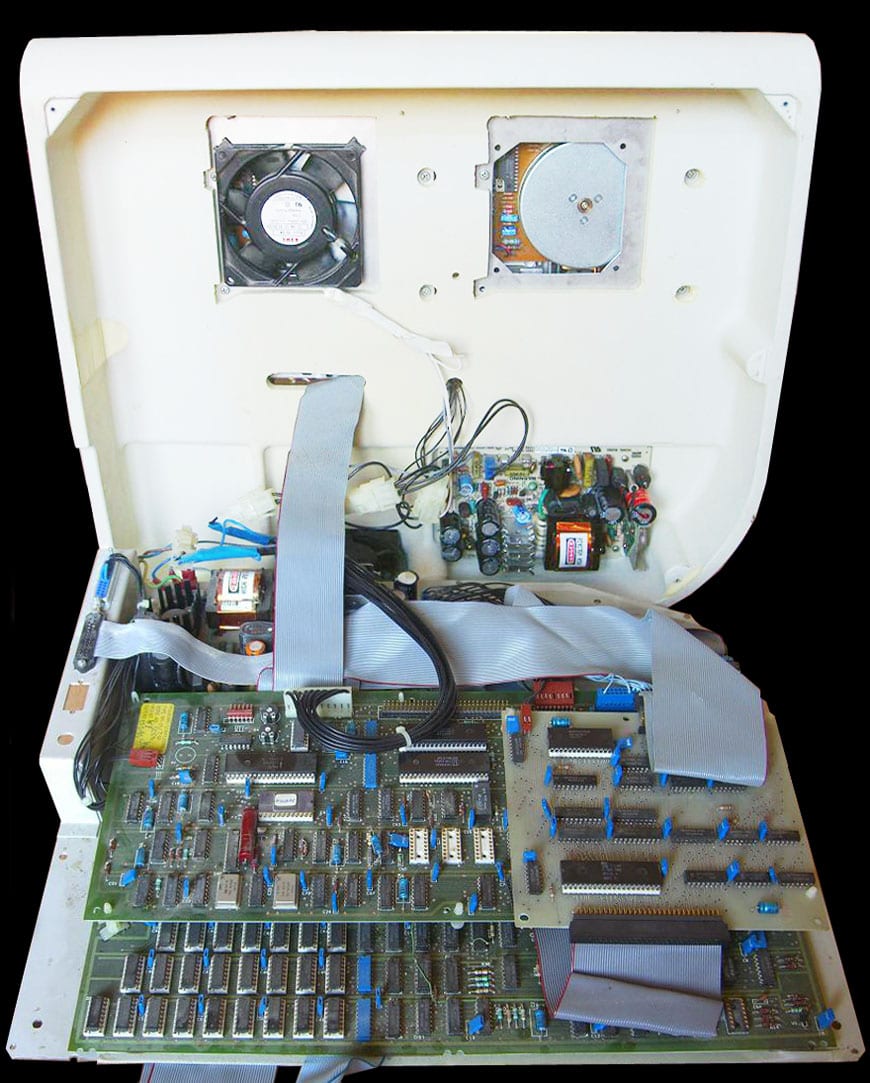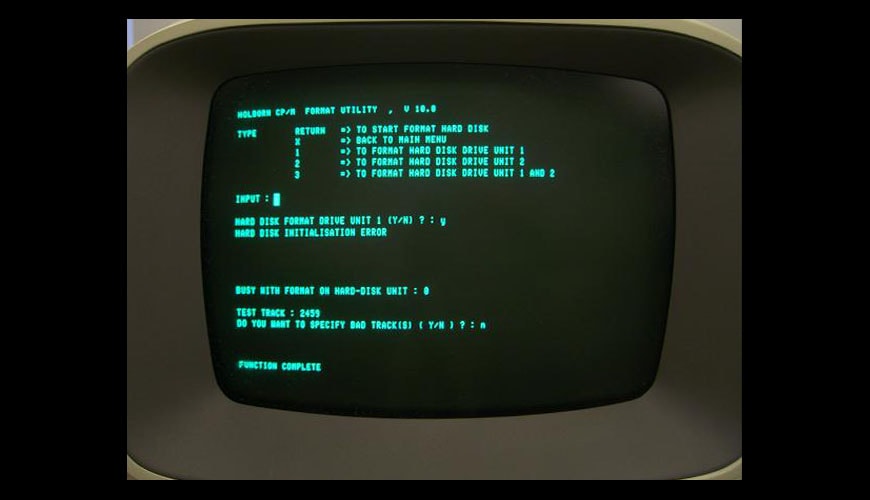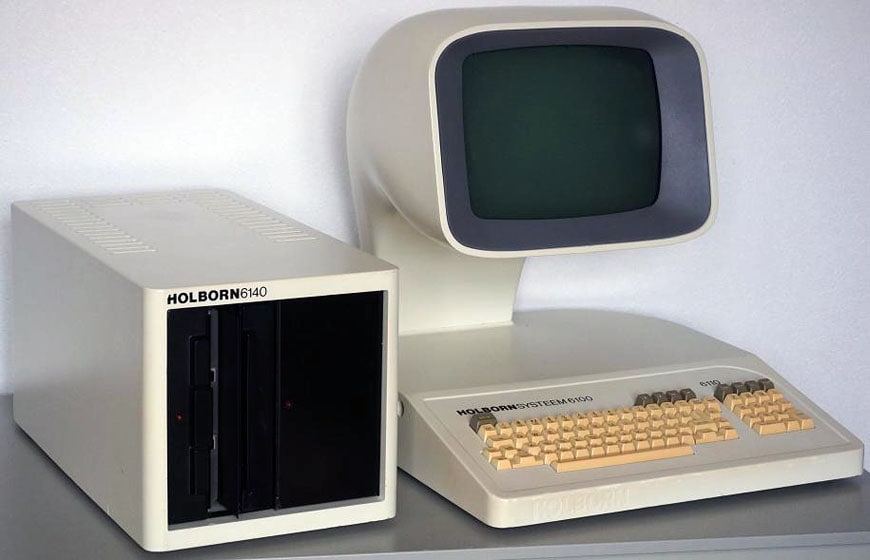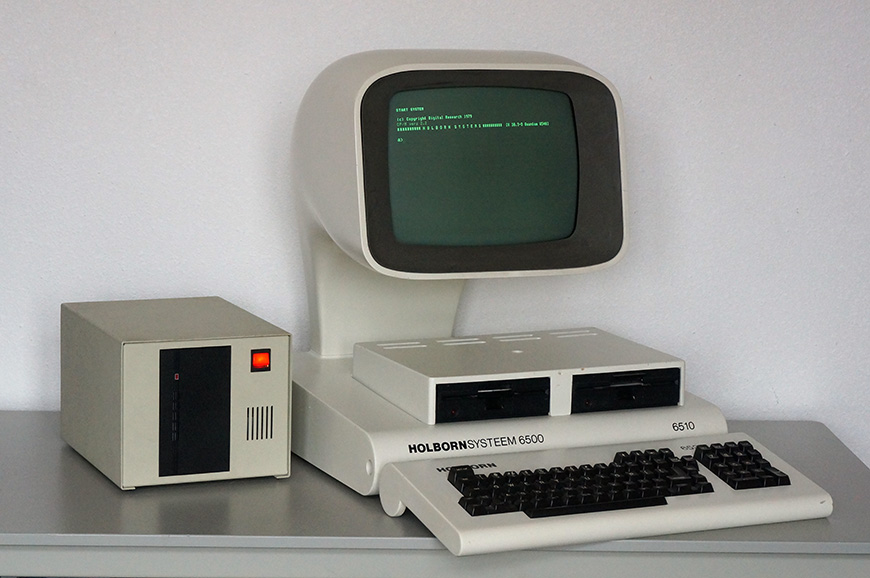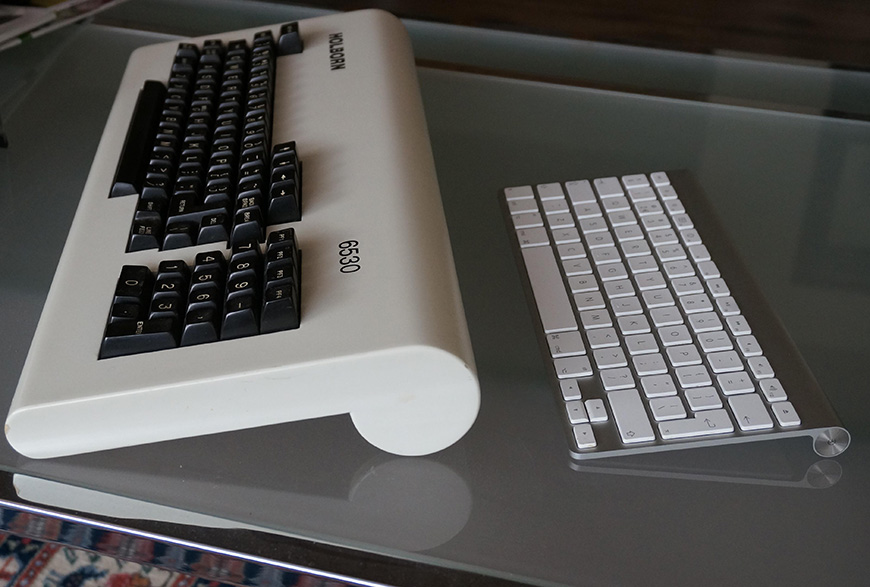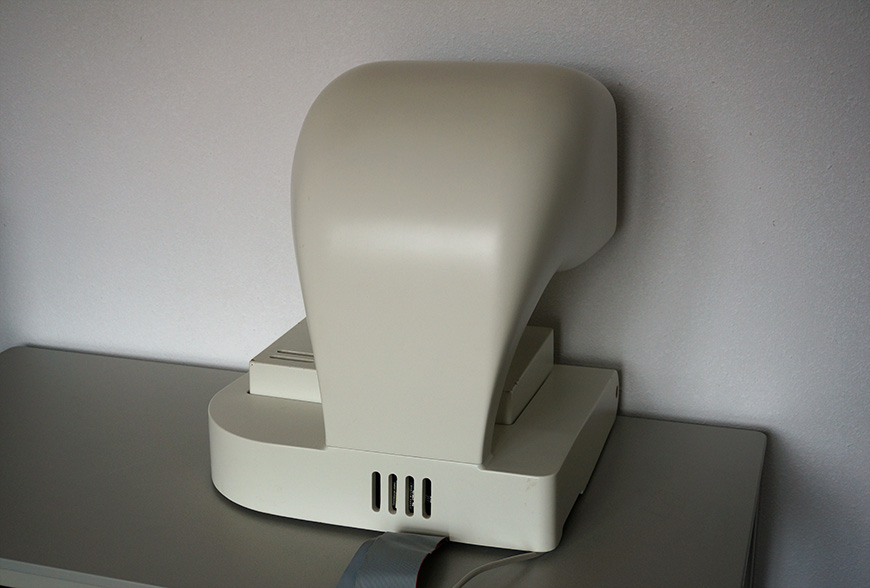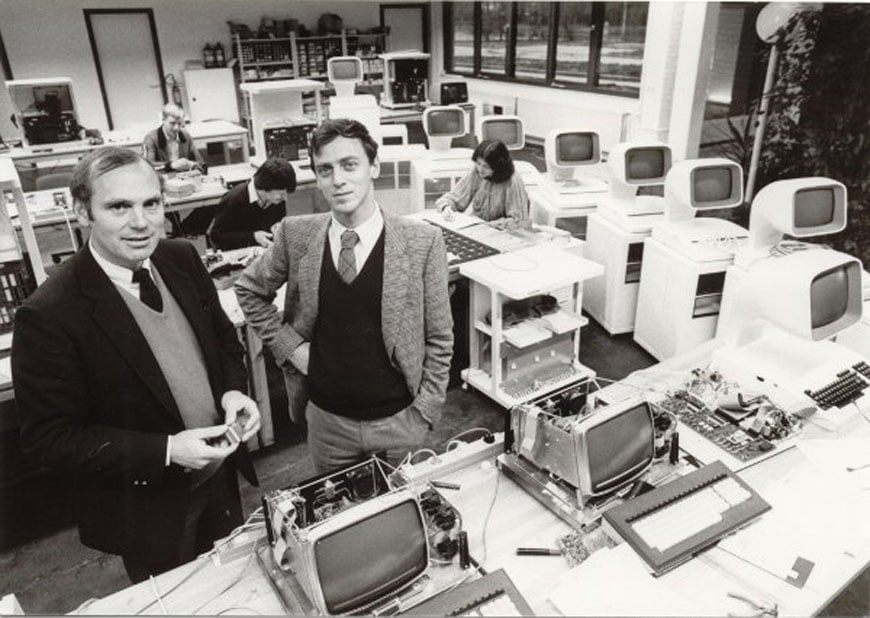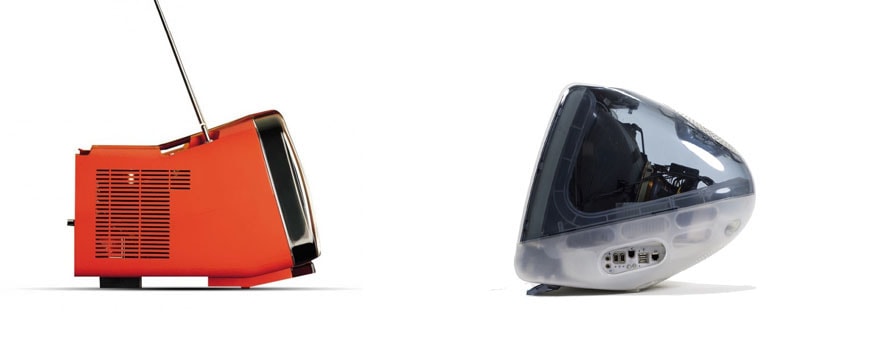The Holborn 9100 microcomputer (1981), history and design
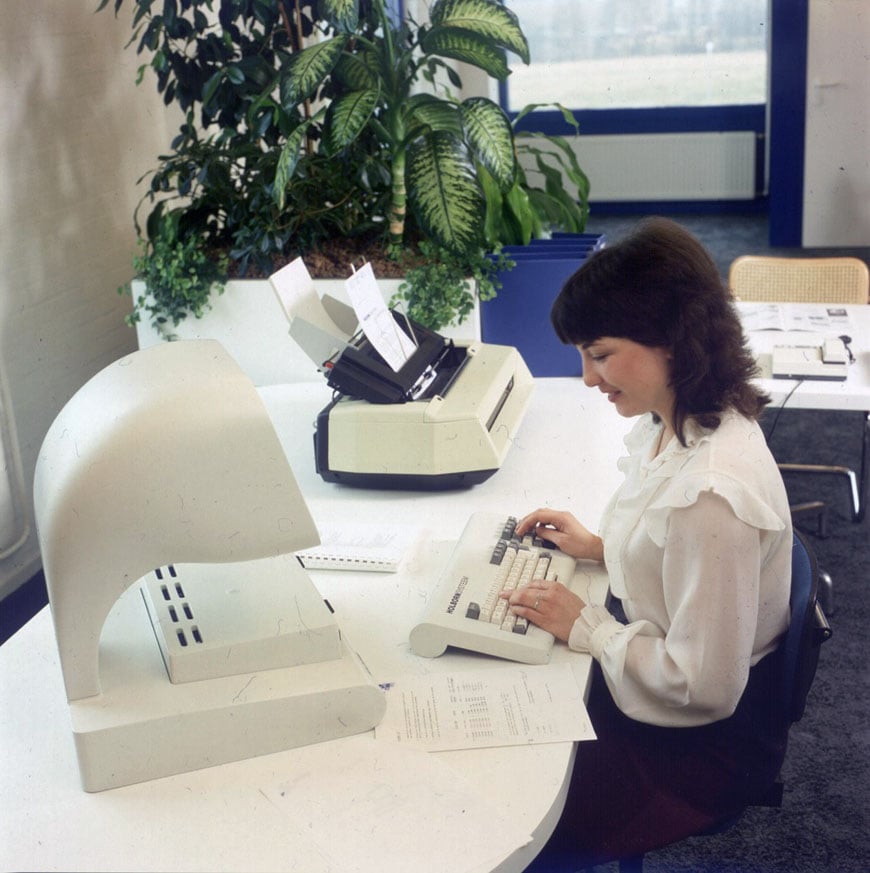
An original advertising photo of the Holborn microcomputer; image courtesy Technisch Museum
Note: warmly thanks to Roland Huisman, the creator of Technisch Museum, for his great collaboration as well as for providing me with most of the original photos included in this article.
The Holborn 9100 microcomputer (1981), history and design
If you wonder what most people intended a “futuristic” computer to look like in the late ’70s, this little-known Dutch PC can give you an answer: it had to be something you could expect to see in the lobby of the orbital station’s Hilton hotel of 2001 – A Space Odyssey.
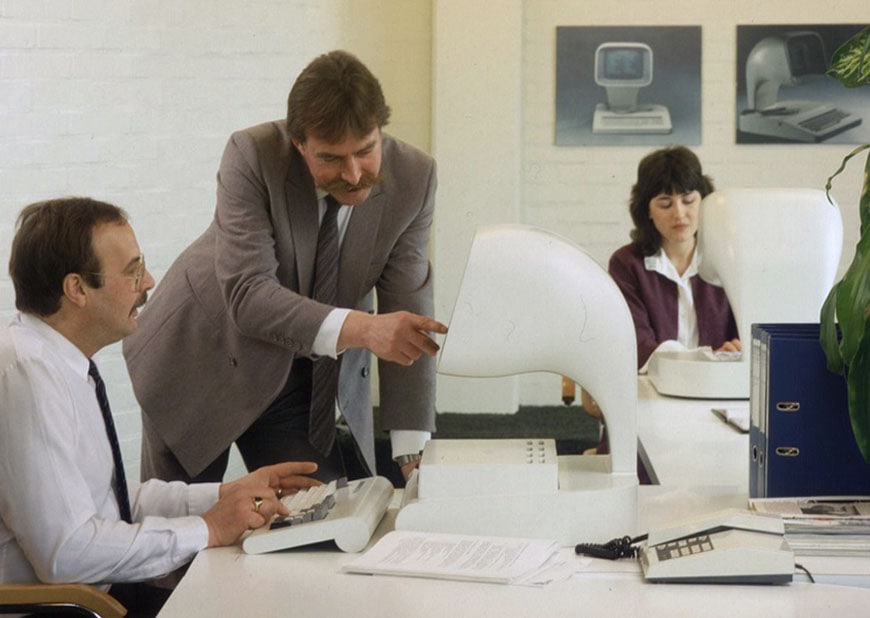
An advertisement by Holborn for the 6500 model; courtesy of Technisch Museum
Released in 1981, the model 9100 was produced by Holborn, a small computer manufacturer based in Enschede, the Netherlands (the brand name was a contraction of “Born in Holland”.
Technically developed by Hans Polak and Henny Beavers, and designed by industrial design office Studio Vos (founded by Dutch interior architect Henk Vos), the system comprised a single-piece keyboard-monitor console and a massive external unit that contained two floppy drives (an optional 30MB hard disk was also available).
There are few doubts that the distinctive hallmark of the Holborn 9100 was its periscope-like 12” built-in monitor protruding from the console.
The full-optional version also included a photosensitive light pen to be used on the CRT screen as an additional input peripheral (the mouse was still not commercially available at the time).
Technically, the 9100 was based on a Zilog Z80A CPU and equipped with 72 KB of RAM (expandable to 220 KB). The Holborn computers were sold with two possible operating systems, a classic CP/M and the custom-made Holborn OS.
An advertising photo of the Holborn model 9100; note the external mass memory box unit which contained two 8” floppy disk drives and the optional 30MB hard disk.
Before creating all-in-one computers, Holborn was manufacturing terminals, of which you can see the model range in this beautiful drawing, whose distinctive case was adopted for the 9100 model; courtesy Technisch Museum.
The design of the Holborn set it apart from most computers of the time, its fluid, organic shape is indeed quite different from the hard-edged forms of, say, the Commodore PET 2001.
The aesthetic of the Holborn was possibly inspired by that of classic modern furniture of the ’50s and ’60s made in molded polymers, such as the Tulip chair by Eero Saarinen, or the Panton chair. Indeed, the case of the 9100 was almost entirely made in thermoformed white plastic. Many, I included, find some similarity between the vaguely anthropomorphic housing of the 9100 and the head of E.T., the extra-terrestrial. Yet, the Dutch computer was designed years before the release of the film by Spielberg, in 1982; therefore, I think this was pure coincidence.
Four different models of the computers were manufactured: the 9100, 7100, 6500, and 6100, with the lower-numbered models being actually produced after the release of the 9100. Overall, the company produced about 200 machines, of which it is estimated that only 20 survive today, thus making the Hosborns among the rarest vintage personal computers.
The computers produced by Holborn, with their exclusive design and good technical specs, were rather ambitious machines, mostly aimed at small to medium businesses.
Yet, the advent of IBM personal computers and a retail price as high as $10,000 contributed to the commercial failure of the 9100 and the following series, which eventually forced Holborn to declare bankruptcy in 1983.

The open case of a Holborn 6500: the upper part with the monitor (in the model 6500 the keyboard was not integrated, replaced by the disk drives) is hinged to a flat board that accommodates the motherboard and most electronic components; photo © Technisch Museum.
The green phosphors CRT monitor of a Holborn 6100; the CRT was manufactured by Toshiba; note the CP/M running on this machine; photo © Technisch Museum.
A 6100 model with its 6140 external unit; photo © Technisch Museum.
The 6500 series featured a slightly different design with a separate keyboard; photo © Technisch Museum.
A side-by-side comparison of a Holborn 6530 keyboard (1982), designed by Henk Vos, and an Apple Wireless Keyboard (2003); photo © Technisch Museum.
A back view of a Holborn 6500 in which we can appreciate the excellent manufacturing quality of its thermoformed plastic body; photo © Technisch Museum.
The founders of Holborn, Hans Polak (right) and Dick Gerdzen (left), pictured in the Holborn factory in Enschede, The Netherlands.
References
For images and info on the Holborn 9001 and other computers produced by Holborn, see:
Technisch Museum (http://www.technischmuseum.nl/, in Dutch; from which I took most of the images included in this article),
Holborn 6140 desktop computer (https://ub.fnwi.uva.nl/computermuseum//holborn.html, in English),
Holborn Computers (https://www.homecomputermuseum.nl/en/collectie/holborn/, in English),
an interesting video is also available on YouTube at https://www.youtube.com/watch?v=H-xoC5zRjjE
copyright Inexhibit 2026 - ISSN: 2283-5474

